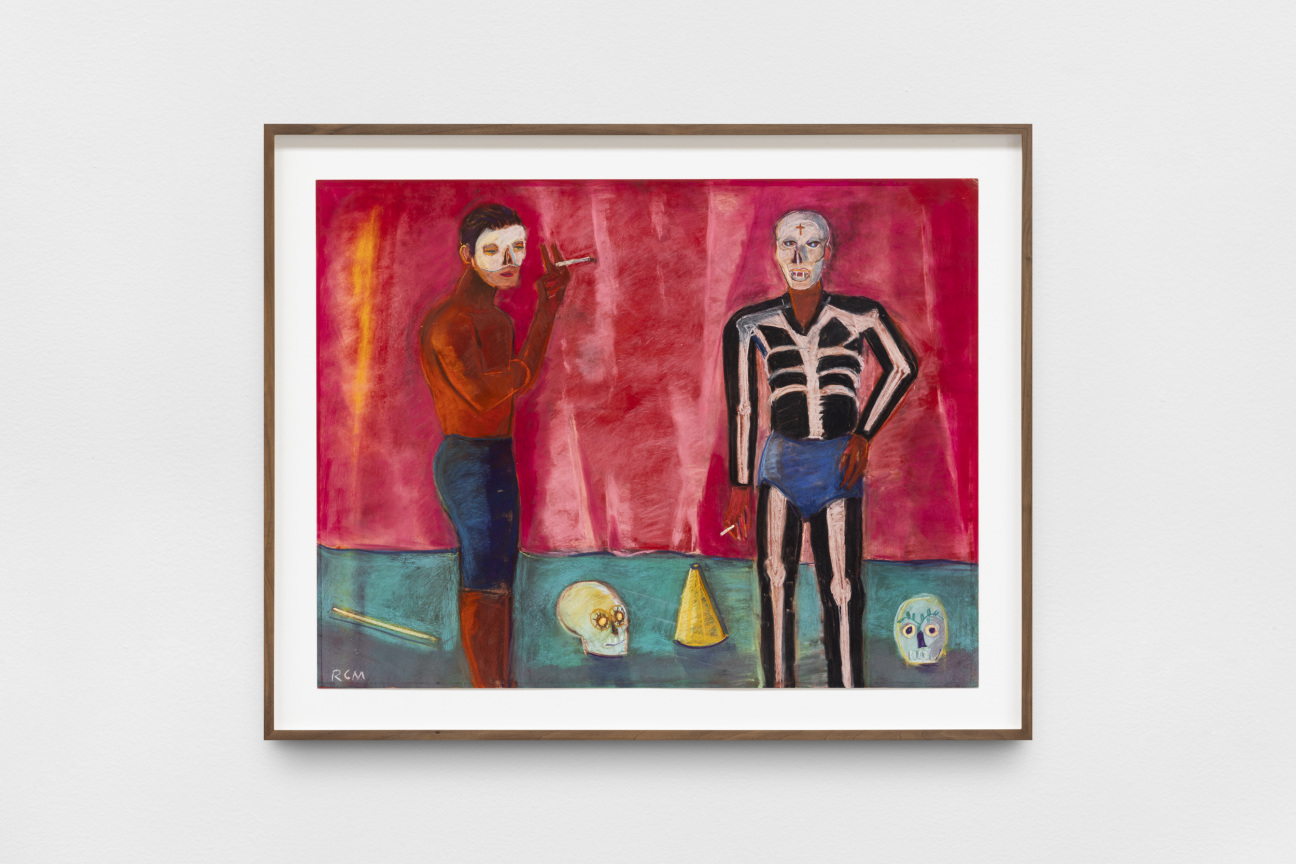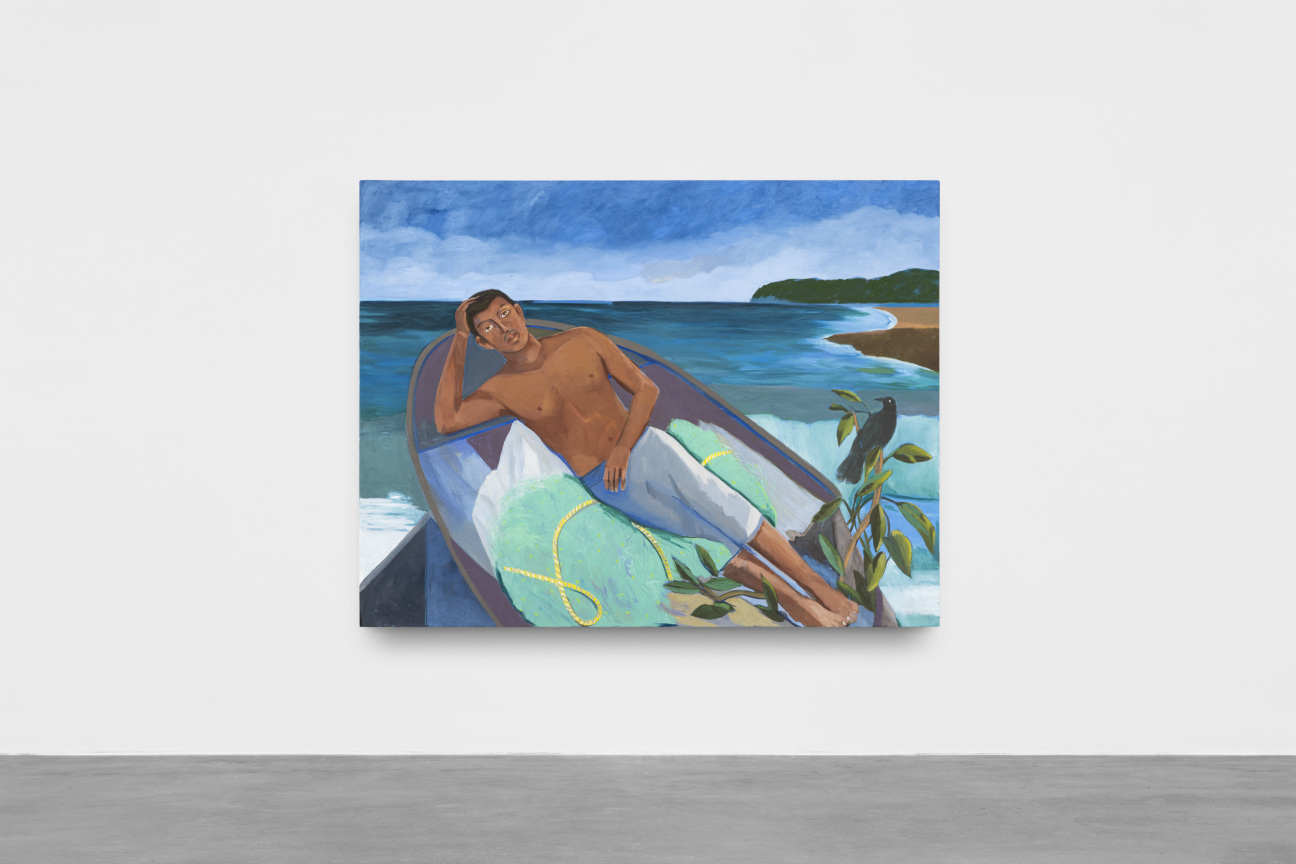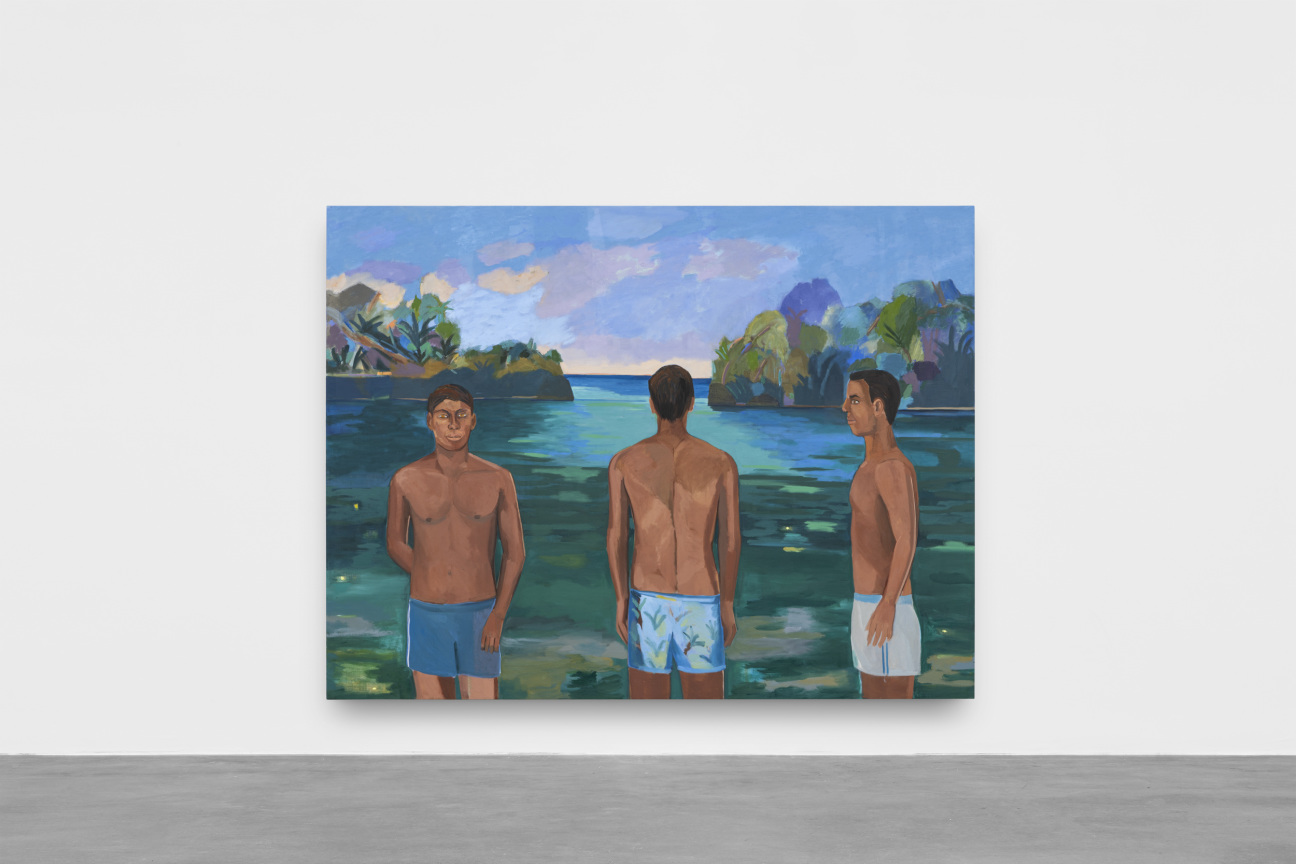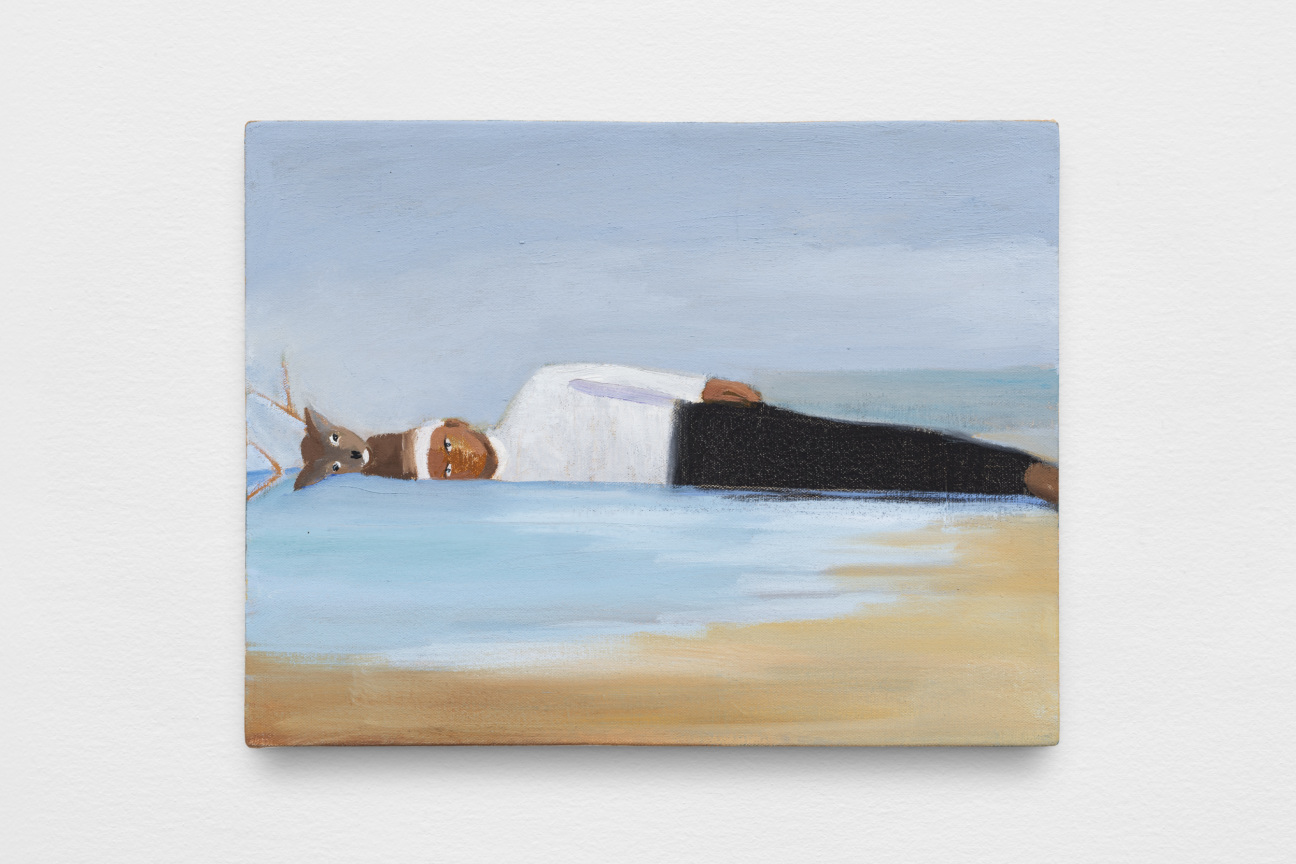
When Roberto Gil de Montes was 12, television arrived in his hometown of Guadalajara, Mexico. One afternoon, a documentary about the British sculptor Henry Moore came on his TV set. “I was watching it very carefully,” Gil de Montes remembers over Zoom. “There was a big studio, and there was a garden. Somewhere there were sculptures. Just by seeing this, I told myself, That’s what I am. I turned off the TV, and I went off and started making art.”
Today, the artist is in his early 70s. He is back in Mexico, living a few hours away from Guadalajara in the beach hamlet of La Peñita de Jaltemba. When he was a teenager, his family moved to Los Angeles, the town where he began to make a name in the Chicano arts movement, a label he sees himself and many of his peers as “being lumped together” under. But it’s only in the past few years that Gil de Montes’s lucid reverie of a practice has picked up major traction in the art world. He began showing with Mexico City staple Kurimanzutto in 2020, made an appearance in Cecilia Alemani’s Venice Biennale last year, and had a solo presentation at Kurimanzutto’s Paris+ par Art Basel booth. Last night, the artist opened “Reverence in Blue,” a solo show at Kurimanzutto’s New York outpost. To mark its opening, Gil de Montes called CULTURED to talk about enrolling in art forever, how he’s reckoning with the surge in attention, and why he’d take his gardener’s job any day.

CULTURED: When you saw the documentary about Henry Moore as a child, what did you identify with?
Roberto Gil de Montes: It seemed like there was something very private because he was on camera by himself, walking through his studio. I think I was an artist already, I just didn't have a word for it. I was doing activities that I now consider to be art.
CULTURED: What kind of activities?
Gil de Montes: In my childhood house there was an armoire with a locked space in the center of it, and it never attracted my attention. Then one day I found a skeleton key and unlocked it. I started collecting objects and arranging them inside and locking them up. That became something very special. It was mine and nobody else's.
CULTURED: You were building your own world.
Gil de Montes: I was a very lonely child; even though I had brothers, I always found myself alone. We lived on the edge of town near ranches, cornfields, and a small forest. I enjoyed going out to get the milk because it allowed me to daydream.
CULTURED: Do you think that state of daydreaming is still the state you need to put yourself in when you're about to create something?
Gil de Montes: Yes. I came to this town which had only one phone 34 years ago, and I liked it. You had to go and make a reservation and get in line to make a call. That was very attractive to me, this primitive way of living. Not having all the resources I had in the U.S. didn’t matter to me. Maybe coming back here was like getting in touch with my own childhood. I left Mexico when I was 13, and even though I never thought of coming back permanently, it just turned out that way when I started spending more time here.

CULTURED: I know you're also an avid gardener. What connection do you see between the act of gardening and the act of painting?
Gil de Montes: One time when I was weeding my garden, I made a connection between weeding the garden and processing thoughts. I thought, I'm weeding, but actually, I'm extricating thoughts or arranging thoughts or getting rid of stuff that is invasive. I like gardening because it allows me to be myself and it allows me to create. The plants are dependent on me. I remember my grandmother in Mexico saying, “Plants are so grateful.” I used to doubt it, but she was right.
I had a large garden when I was in LA. I was spending a lot of time in the garden, and sometimes I would look at my garden and say, “Oh my God, it looks great.” But then I would think about it again and say, “But there's no paintings.” I [would garden] instead of going to the studio and spending the entire day there. Now I have a gardener here in Mexico, and the first time he came, I said, “I'd like you to know that I want your job.”
CULTURED: What do your days in the studio look like?
Gil de Montes: I come into the studio between 8 and 9 a.m., and, usually, I'm already thinking of an area of things that I want to do. This year was a little bit different. I was practicing observing myself … Sometimes I go through, like everybody else, a hard day, or I don't feel good, or I'm having problems with something. I would come into the studio, very agitated, not calm, not thoughtful. But since I was into observing myself, I would stop myself and ask myself to please ground myself. I would stop and then go get a book and sit down in the studio and just change the activity, and then I would wait a little bit, and feel better and not so agitated when I would start painting again.

CULTURED: What kind of books did you read? What else do you surround yourself with in the studio?
Gil de Montes: I have Matisse. I have Cézanne. I have Manet. I have Marsden Hartley. I have a couple of books by friends. I have some pre-Columbian objects. Then I have some Mexican poetry books. My studio opens up to the central square, where there's a church, and then half a block away is the ocean. So I can get out if I get too overwhelmed. That's about all I have.
CULTURED: Can you tell me about the title of this show opening at Kurimanzutto, “Reverence In Blue”?
Gil de Montes: Reverence means that everything is truthful. Somebody from the gallery came and said, “Oh, you have a lot of blue.” At that moment I realized, Yeah, I have a lot of blue. It's not actually even my favorite color, but I do have it, and I realized that maybe subconsciously I chose blue.
CULTURED: Or maybe blue chose you.
Gil de Montes: Exactly. But I think color has something that is emotional and so perhaps that's what happened. More than intellectual, I am emotional. I don't rationalize things.

CULTURED: You've just come off appearances at the Venice Biennale last year and Paris+ par Art Basel last month. Now you have a solo show opening at Kurimanzutto. In an interview, you said, “It makes me uncomfortable that there's recognition of my work, even though I spent all those years trying for that.” How are you sitting with that discomfort and continuing to create regardless of it?
Gil de Montes: I had to stop drinking. I was able to give it up fairly easily, but I think it was just letting go of a lot of stuff so that I could focus on what I was doing and not be concerned with anything else. Here in Mexico, people would ask, “How are you doing?” And I would say “I'm doing fine, I have a lot of work.” Then they would look at me like, “Are you OK?” I would say, “Yeah, I'm OK.” They would say, “Oh, thank God.” Then, I would see somebody else, and they would ask, “How are you doing?” I would say, “I'm doing fine, but I do have a lot of work.” And they would say, “But you're OK, you enjoy your work, don't you?” Then finally I realized, in order for me to convey to them that I'm OK, when they say, “How are you?” I say, “I'm fine, I have a lot of work, thank God.” When I say I'm uncomfortable with all this attention, they also say, “But you're OK, that's good, no?” And I say, “Yes, I'm happy, of course. But that doesn't take out the feeling of me being uncomfortable with it.”
CULTURED: What has living as an artist afforded you?
Gil de Montes: The freedom to say what I want to say. I could say that in the town where I live, when I got here, it was a very small fishing village. For many years, if you came here and you wanted to stay here for a year, you could probably rent a place for $200 a month. But all over Mexico, there's a lot of Americans and Canadians coming and displacing the local people by raising real estate prices, by raising rental prices. I see a lot of people in my town now who can’t afford to rent, because of this change. If I can say that, maybe somebody will hear it.
I consider making art an activity that is precious; and the memory of me as a child finding it saved my life. When I was [growing up] in Mexico, I went to my grandmother, and I said, “I want to take painting classes at the park,” and she said, “No, you're not.” So I didn't. Then we went to live in Los Angeles, and I was walking in the hallway at school. I saw a room, and said, “There are paintings here.” That’s where I found, not only what I was gonna do, but the road. I immediately went to the teacher, and the teacher said, “Well, yeah, you can take this class.” Then I just enrolled in art forever.
"Reverence in Blue" by Roberto Gil de Montes will be on view through Dec. 22, 2023 at Kurimanzutto in New York.










 in your life?
in your life?

